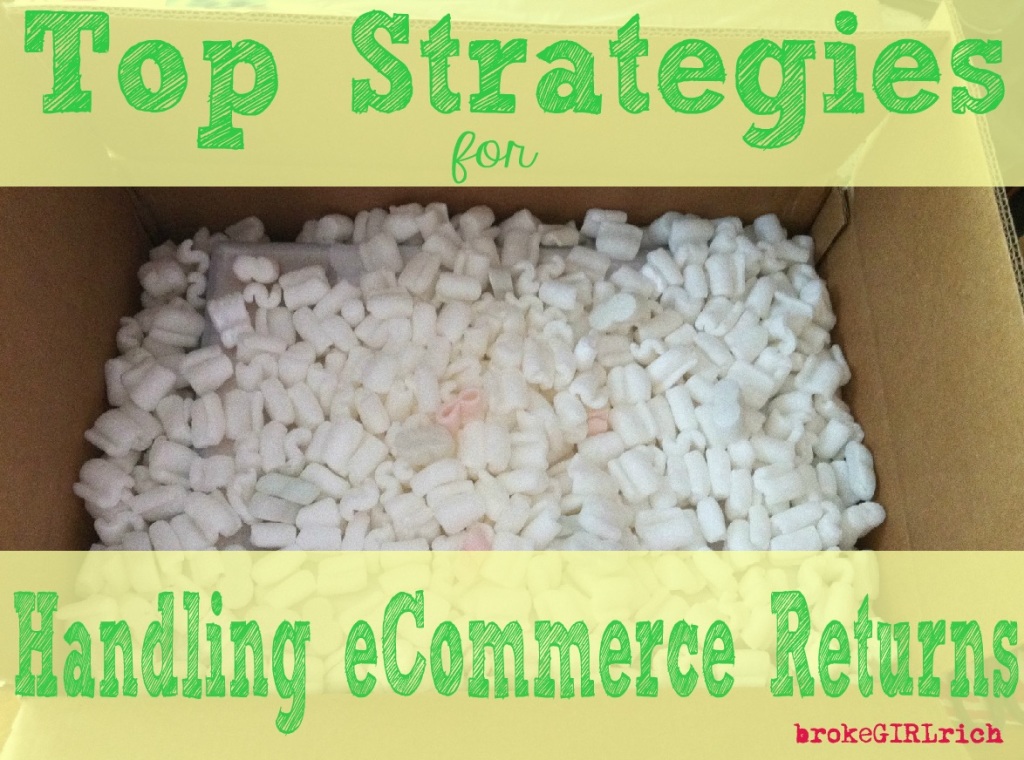Returns are a fact of life in retailing. The reasons for this are as many and varied as your customer base. Regardless of how great your product is, or how much you strive to ensure customer satisfaction, you’re going to see returns. With that said however, you should still do everything you can to stave them off. For this reason, number one among the top strategies for handling ecommerce returns is to do everything you can to avoid giving a customer a reason to request a return in the first place.
Disappointment in one form or another is the top reason customers return products. To minimize this, it’s important to do everything you can to ensure your product descriptions are as accurate as possible. If the product is complicated, include a video demonstrating its assembly and/or usage so customers have a clearer understanding. Well-crafted photography also helps a great deal in this regard. You should also make sure your fulfillment process includes double-checking to ensure the product shipped is exactly what was ordered. Yes, it costs more to operate this way, but you’ll make up for it by avoiding many of the shipping, handling and restocking costs associated with returns.
Here’s a secret a lot of small-minded businesspeople overlook; accepting returns will increase sales. After all, it gives shoppers peace of mind. Remember, most returns happen because people are disappointed, if you can assure them of recourse if they feel let down by the product, they’ll be more likely to give it a shot. While it’s very tempting to say all sales are final, then pocket the cash and be done with it, you’ll cost yourself a lot of business operating that way.
Making it simple for customers to understand your return policy is also very important. Always state your terms in straightforward language. This makes it easier for customers to follow the policy and positions yours as a truly service-oriented enterprise. It’s also a good idea to make the policy readily visible. Most sites incorporate it as a link in the footer, but displaying it prominently can be a conversion trigger for many customers.
Always make it a point to disclose any costs associated with returns clearly and succinctly. Getting hit with an unexpected charge can be a real buzz kill for your clients. Yes, providing free shipping for returns is ideal, but if that isn’t feasible for your business model, state clearly that return shipping will be the responsibility of the customer. It’s better to be up front about it, rather than blindsiding a purchaser with what will come across as a hidden charge. The best ecommerce store builder software includes returns management applications and refund policy generators to make this aspect of your business easier to conduct.
Imposing a time limitation for the acceptance of a return is a generally accepted practice. Lengths vary according to the circumstances of the return as well as the nature of the product. Some places grant seven to 14 days from delivery, while others allow up to 90 days. Whatever you decide should be spelled out clearly and found easily on your site. Usually, the window for “disappointment” returns is narrower than the one for “malfunction” returns.
You should also provide a very clear understanding regarding whether returns will be in the form of cash back, exchanges or a credit toward a different item. Again, your decision in this regard will largely be predicated upon your business model. If you can afford cash back, customers tend to look upon this with the most favor. Generally speaking, if the return is triggered by a product malfunction, customers should be entitled to the option of a cash back refund.
Above all, make sure your customer service team handles every return request with grace and professionalism. While these strategies for handling ecommerce returns will improve your conversion rate, amplify your repeat business and reduce the time and money you spend handling returns, satisfied customers are the best advertising you’ll ever get. Treating their concerns with respect leaves them singing your praises to everyone within their spheres of influence.




